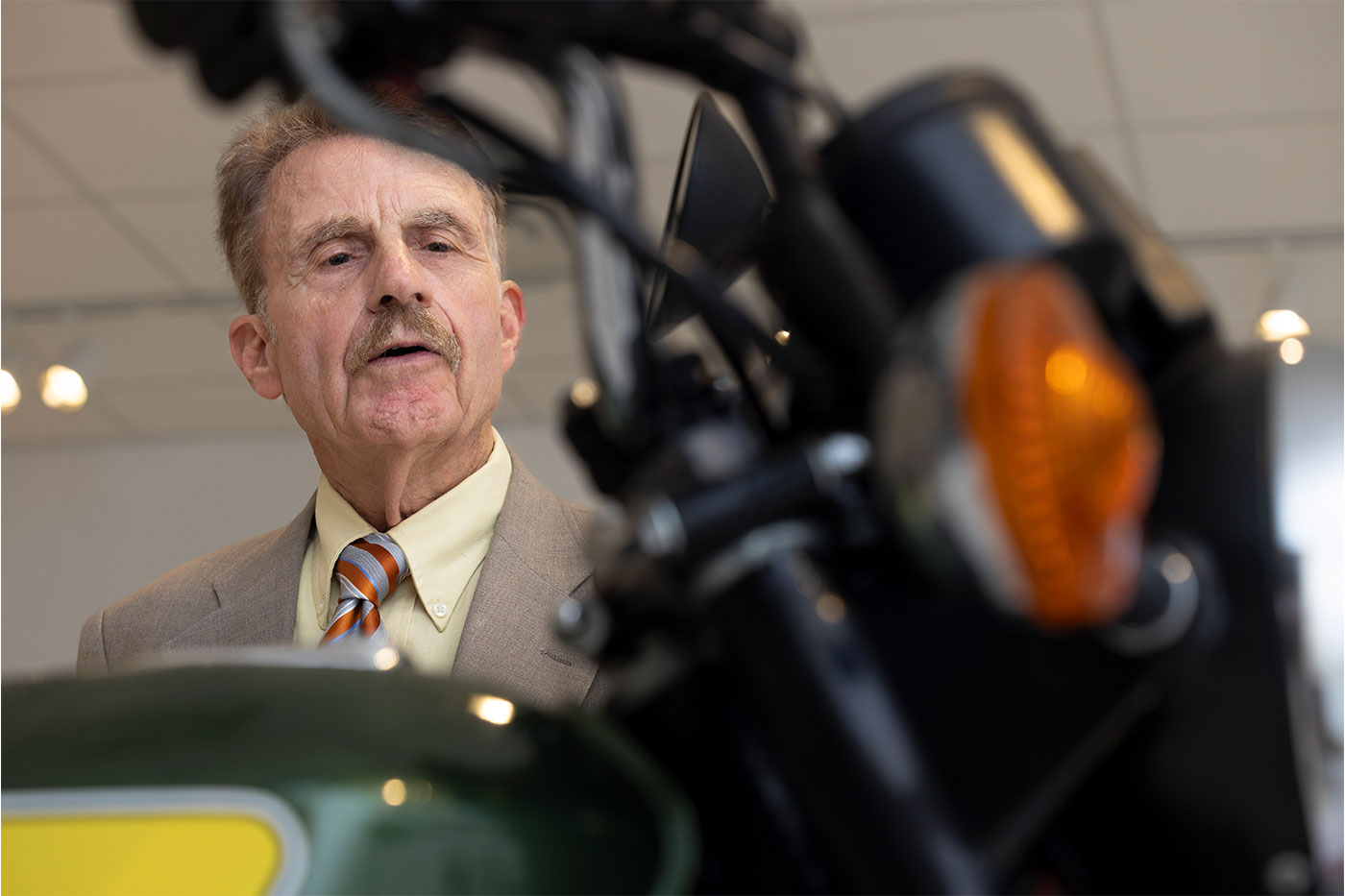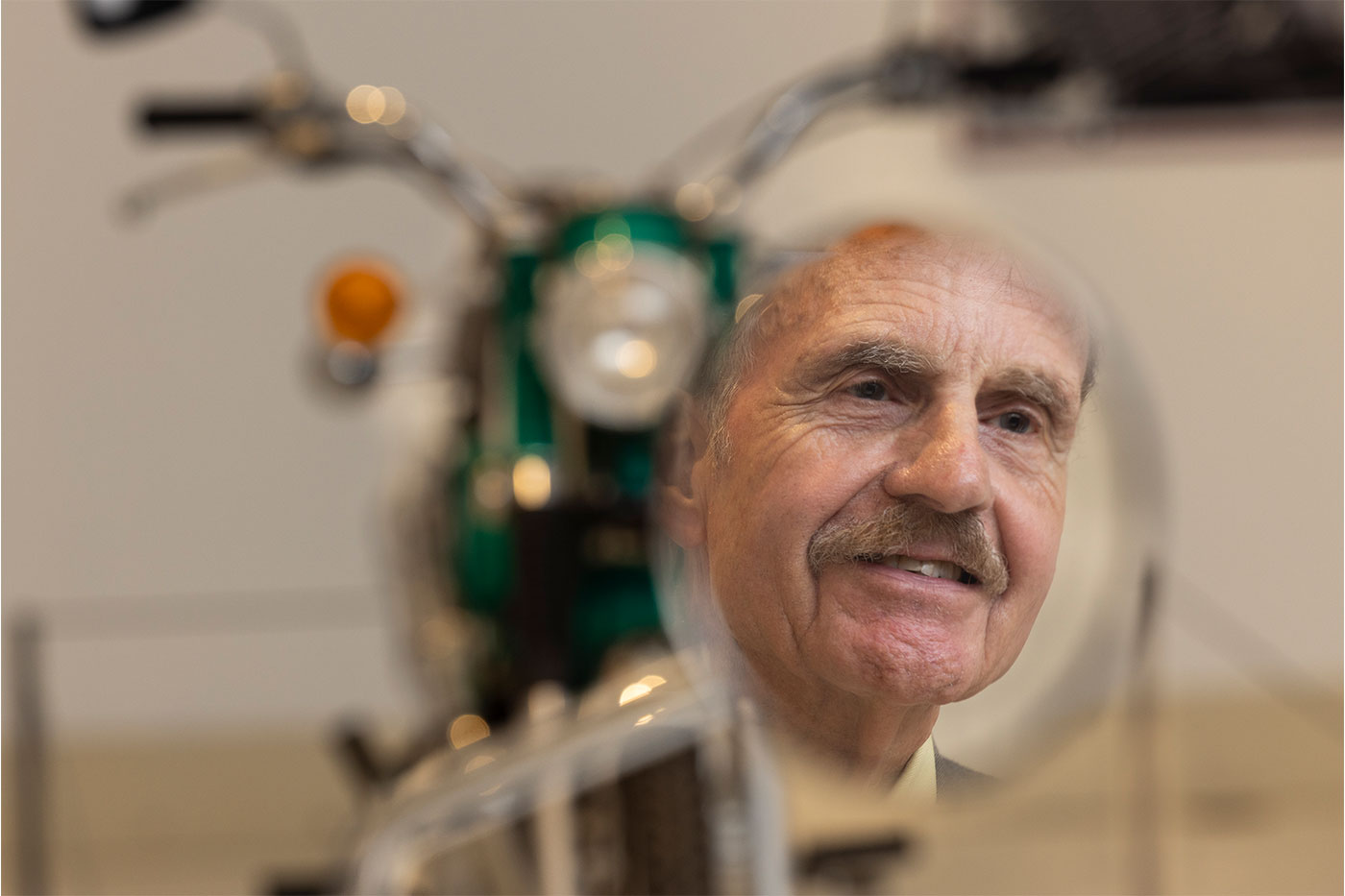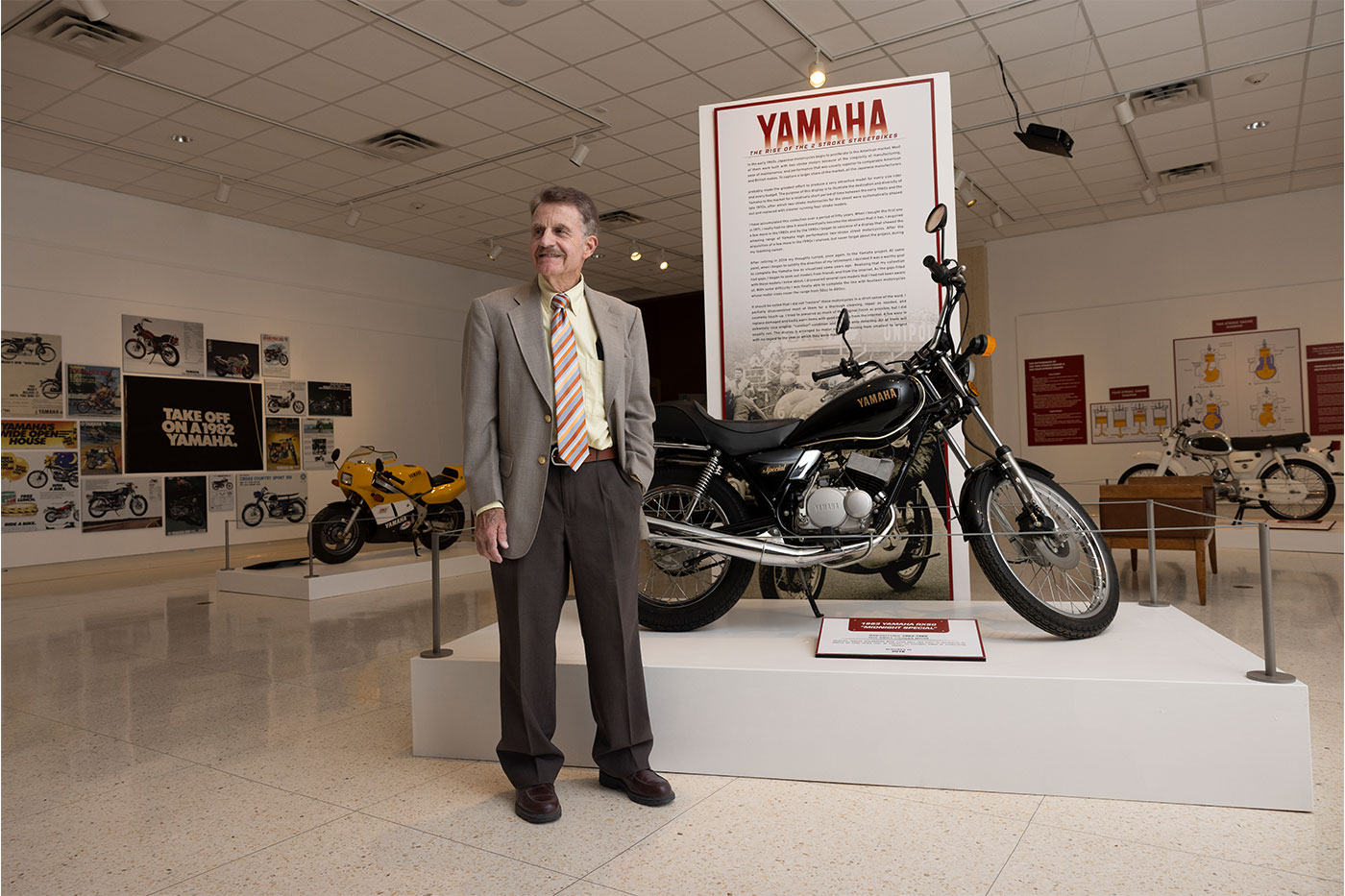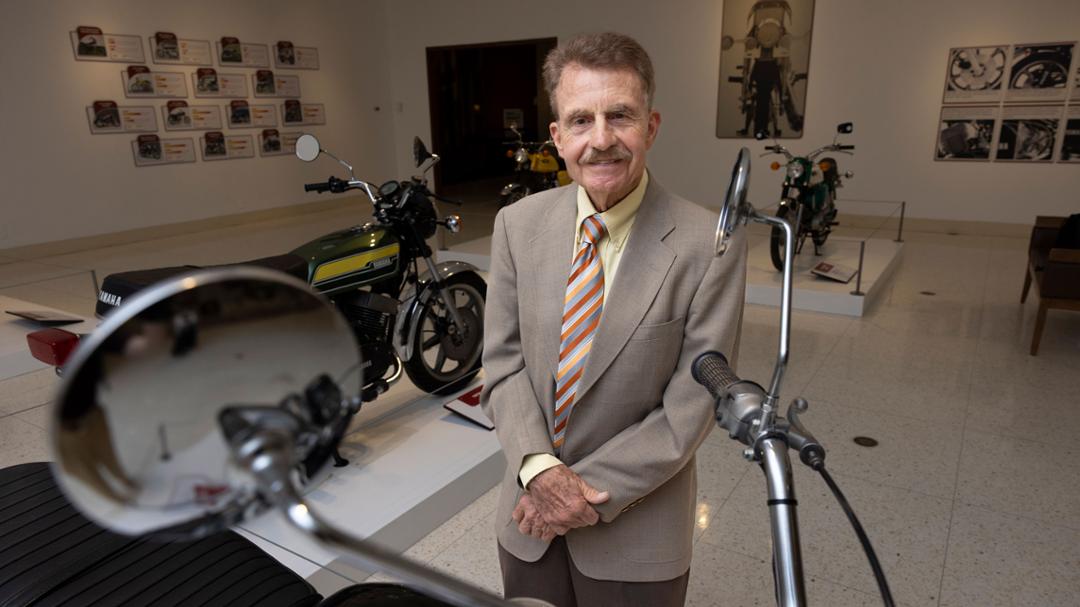Texas Tech alumnus makes his personal collection of vintage motorcycles available to the museum, providing a glimpse of Japan’s post-war manufacturing history.
The Museum of Texas Tech University recently opened the exhibition “Yamaha: The Rise of Two-Stroke Street Bikes,” featuring 14 Yamaha two-stroke engine street bikes from the 1960s and ‘70s.
“The Yamaha collection is a tribute to the Japanese endeavor to rebuild after World War II,” said John Cain, the exhibit’s collector. “It’s a monument to their creativity, to their engineers and to their ability to make do and make bikes that were appealing to a wide number of people at a reasonable price.”
Two-stroke engines are simple and lightweight in their design, making them easier to maintain and ideal for small engines in lawn mowers or chainsaws. These engines also require users to pre-mix fuel and oil. Emissions regulations in the 1980s and ‘90s have all but phased out two-stroke engines in automotive and motorcycle uses.
But what makes the exhibit special is Cain’s background. Not only did he graduate from Texas Tech University, but he’s a Lubbock local.
The Collector
In 1955, Cain’s father moved the family from Iowa to Lubbock to teach advanced business management courses at Texas Tech. Cain graduated from Texas Tech with his bachelor’s degree in music and a minor in English in 1970 and spent some time as an orchestra director for Lubbock Independent School District before retiring in 2014.
Though Cain’s father was a business instructor, he also was a natural tinkerer, always repairing and restoring classic cars in their garage. Cain would frequently work alongside his father, hands covered in oil and surrounded with various automative parts meticulously laid out.
After graduating from college, Cain took this hobby in a new direction: motorcycles.
“My dad despised motorcycles,” Cain recalled, chortling. “He liked that I was taking on projects, but he did not like motorcycles.”

Cain fell in love with two-stroke street bikes in 1971 after purchasing a 1968 Yamaha 350. Yamaha’s advertising materials describe the 350 as a “super bike.” However, for Cain, it was anything but.
He purchased the bike from a local motorcycle enthusiast for $100. It was in serious need of repair, and Cain found it difficult to find parts to fix the bike, holding on to it for decades. It wasn’t until the ‘90s, when buying parts over the internet and through eBay became possible, that he was able to bring the bike out of storage and repair it to working order.
As the decades rolled on, Cain grew his motorcycle collection – now at nearly 40 across various other manufacturers like Honda, Suzuki and Harley-Davidson – and focused on restoration, not preservation. He would disassemble bikes as needed for thorough cleaning and repair, taking on the occasional cosmetic touchup.
“I tried to preserve as much of the original finish as possible and replace any parts with good originals,” Cain said. “That’s pretty much my philosophy. I would rather see the original in less-than-perfect condition.”
Cain’s philosophy mirrors that of “wabi-sabi,” a Japanese aesthetic that appreciates the simplicity and fragility of impermanence. It is a form of melancholic beauty and stillness. Aging, deterioration and flaws are natural parts of life and give items unique characteristics. “Wabi-sabi” can be seen in the slight differences of handmade pottery, the cracked façades of abandoned buildings or moss creeping up a felled tree stump.
Cain sees this beauty in the wear and tear of each motorcycle. These are machines – well-used machines – that have lived lives and traveled to distinctive places.
And now, his collection of Yamaha street bikes has arrived at the Museum of Texas Tech.
The Collection
When Cain retired from teaching in 2014, he decided it was time to elevate his collection of Yamaha two-stroke street bikes into a personal exhibit for family and friends.
Cain recognized gaps in his collection and sought out models from friends and sellers on the internet. By the time he was ready to set up his personal display, Cain had 14 bikes covering engine sizes from 50cc to 400cc. He also acquired marketing materials for each bike, including pamphlets and spec sheets.
“If you went into a Yamaha dealership in 1972, this would be the literature you would look at,” he said.

Beyond just telling the marketing story of Yamaha, Cain sees his collection as a glimpse into Japan’s post-war mentality.
“This collection really is a tribute to the post-war Japanese engineers, designers and advertisers,” Cain said. “They built all kinds of things like musical instruments, cars and motorcycles. This is just one small snapshot of Japan rebuilding itself using a technology that they already had.”
While Cain focused on building his Yamaha collection, he noted that makers like Honda, Suzuki and Kawasaki were similarly building affordable and easy-to-maintain bikes to sell in foreign markets.
Cain set about creating supplemental writings that described each street bike not only in this post-war context but also linked them to the U.S. market. He even included personal anecdotes to help connect Lubbock to these moments.
Cain remembered a number of Japanese motorcycle dealerships popping up in Lubbock during the late ‘50s and early ‘60s. People were flocking to buy these smaller, lightweight bikes that were more affordable than their U.S. competition.
“Everyone wanted to own one or at least ride one,” he said. “Rental locations sprang up at the dealerships and gas stations around town. It became a common sight for teenagers to race around town on small 50cc motorcycles.”

He hopes museum attendees learn a little about post-war Japan and gain an interest in motorcycles while thinking back to bygone days.
“Some people will look at these motorcycles and say, ‘I remember,’” Cain said. “I’ve been looking at them saying, ‘I never forgot.’”
“Yamaha: The Rise of Two-Stroke Street Bikes” is open through Sept. 7.

